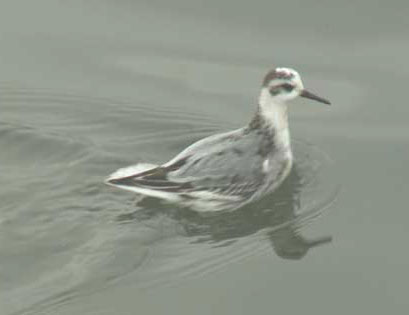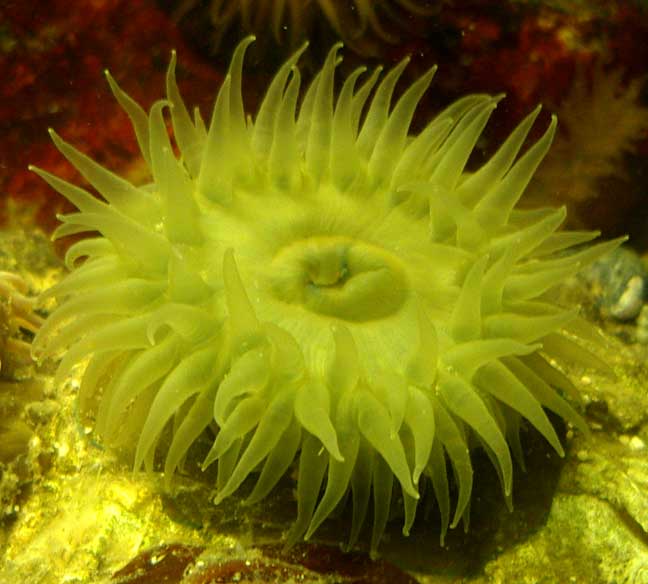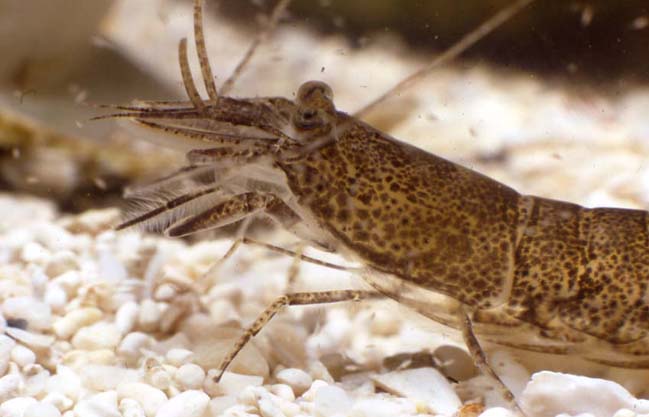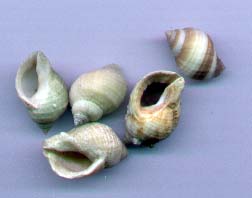
The length of the intertidal zone varies from about 68 metres by Caratís Café to 100 metres. The tidal range is 7 metres.
Three Major Zones
1)
Sublittoral:
land below low tide level (Chart
Datum)
Characteristics:
completely submerged at all times and can be considered to be the sea in
ecological terms
Fauna:
Special shallow sea fauna
2)
Intertidal:
land between Chart Datum (Lowest Astronomical Tide) and the Highest Astronomical
Tide.
Characteristics:
Submerged at varying amounts according to the states of the tide.
Fauna:
Special intertidal fauna
3)
Foreshore:
defined in this text as the land between the High Water Mark and start
of urban development.
Characteristics:
Influenced by the salt spray and liable to flooding
Flora
and Fauna: Wild plants adapted
to the special habitat and bird nesting etc.
 |
Southwick
Beach at mid-tide with waves rolling in suitable for surfing
The length of the intertidal zone varies from about 68 metres by Caratís Café to 100 metres. The tidal range is 7 metres. |
Sublittoral
The
action of the sea has eroded the shell fragments to a deep sand covering
for most of the sublittoral zone, although at the eastern end the bedrock
is exposed in an area known as the Jenny Ground.
The
depth is shallow with a very gradual transition to deep water.
The
currents are not dangerous but strong enough to prevent seaweed growth
on the minimal bedrock.
Fauna:
Typical sandy shallow sea fauna of the English Channel; shrimps,
flatfish (common species), Weevers,
a few rays
etc. A few unusual invertebrates are dislodged from their burrows in storms
but these will originate from deeper water, as will the rare Seahorses.
The shallow seas are nursery areas for juvenile fish, especially Bass.
 |
 |
 |
Sea birds can be observed over the shallow sea area. Most of these seem to be passage migrants. Rarities like the Grey Phalarope attract birdwatchers. Cormorants perch on man made protuberances sticking out of the sea. Terns dive for fish mostly in the autumn.
Magic
Map shows Mean Low Water Level where sand is revealed. This will be
exposed on the low spring tides which occur around dusk and dawn. Seen
in daylight during the summer.
The
OS map shows Mean High Water Mark. The promenade marks the practical limit
of the Highest Astronomical Tides, which may be breached by storms. Ordnance
Datum is 3.05 metres above Chart Datum.
The
intertidal
zone above Mean Low Water Mark is characterised by Cretaceous flint pebbles
of various sizes. These are moved about by the action of the sea and longshore
drift occurs (movement of the pebbles eastwards).
These
moving pebbles prevent the colonisation of any macro fauna of interest
to naturalists. The habitat is too unstable for settlement of seaweeds.
 |
 |
 |
The
exception is where man has created artificial sea defences like the Larvikite
(a type of syenite)
rock sea defences, wooden groynes and other outlets. In these areas the
lower shore (lower part of the intertidal zone) resembles a rocky shore
and fouling organisms (to boat people) and a limited rocky shore fauna
of acorn barnacles, mussels,
limpets, dogwhelks,
sea anemones, small
fish and crabs of interest to rockpoolers
occur. This fauna is poor in comparison to a genuine rocky shore.
The
sandy zone exposed at low tide is accessible for bait diggers for worms
and shrimpers for the Brown
Shrimp. However, there seems to be
insufficient sand on Southwick Beach exposed at low tide to support a flock
of a small bird called the Sanderling,
as winter flocks of these shore birds occur further west at east
Worthing to Lancing shores.
 Birds
visit rocky shores and some like the Turnstones
can almost become residents.
Oystercatchers
can occasionally be seen probing for worms and small crustaceans
on the shoreline
Birds
visit rocky shores and some like the Turnstones
can almost become residents.
Oystercatchers
can occasionally be seen probing for worms and small crustaceans
on the shoreline
Strandline
(> High Tide Mark)
 |
 |
 |
Southwick beach receives large amounts of flotsam and jetsam including the remains of natural organisms, notably the alien Slipper Limpets.
Foreshore
Above the direct influence of the sea where the pebbles are not rolled about by the waves, these type of shingle beaches can support both vegetated shingle flora and provide bird nesting sites for birds like the Ringed Plover that choose this habitat. The problem with Southwick is that this area is very small because of the harbour development. It is limited to the area around Caratís Café where a typical selection of the common species occurs, including aliens. All these plants can be found on Shoreham Beach with the possible exception of the terrestrial Kidney Vetch. To the east where there is more shingle above the High Water Mark, the shingle is continually being disturbed and this removes shingle plants and discourages nesting birds.
 |
 |
 |
 |
 |
 |
The vegetated shingle patch outside Carat's Cafe, Southwick Beach, alongside the road on the north side was full up with a selection of wild plants notably Silver Ragwort, Kidney Vetch, Melilot, Yellow-horned Poppy, Sea Beet, Rock Samphire, Sea Campion, Tree Mallow, Scentless Mayweed, Rough Hawkbit, a Thistle, Dock, Bird's Foot Trefoil, Sea Heath and many others I did not note.
Extract
from Southwick Nature 2007
Additional Wildlife
A pair
of Peregrine Falcons regularly nest in the box on the Power Station
chimney. The hawks are rarely seen hunting in the vicinity. They fly to
the downs
or other areas.
Other
scarce birds are likely to be passage migrants that will settle on the
sea offshore of Southwick Beach.
Up to medieval times, Southwick beach was possibly exceptional for its large number of Oysters. The evidence is exiguous, but the beach may have been stabilised by large numbers which would have been found in what is now the canal section. The commercial development of the harbour has intruded on the foreshore area and limited this interesting zone to insignificant (cf. Shoreham Beach).
Activities:
Sunbathing,
shrimping,
wind surfing, kite surfing, birdwatching,
Occasionally:
rockpooling,
spear-fishing, SCUBA diving, canoeing, botany.
Summary
Wildlife interest on Southwick Beach is rather poor compared to other beaches, but beaches are rich in variety and interest compared to many other habitats.
Technical References:
Wentworth Scale for the sizes of boulders, pebbles, sand, silt etc.
Other
references not on the SBRC list
An
ecological assessment was undertaken when installing the new sewage pipeline.
Nothing of special interest was listed.